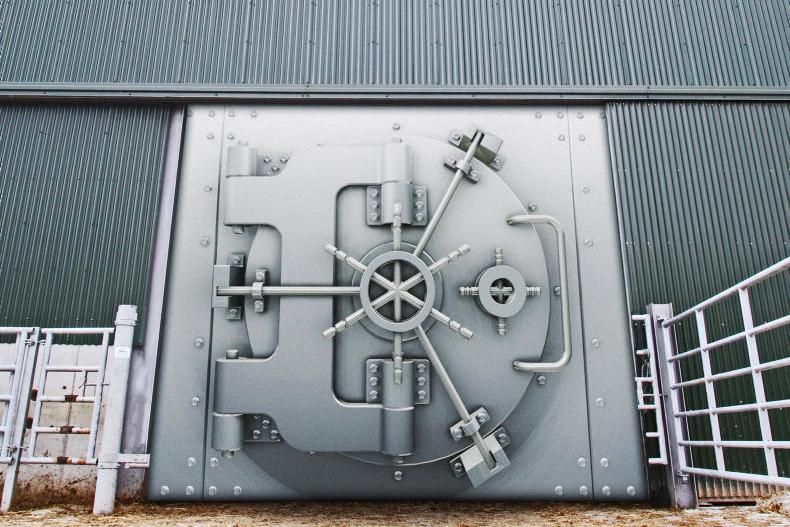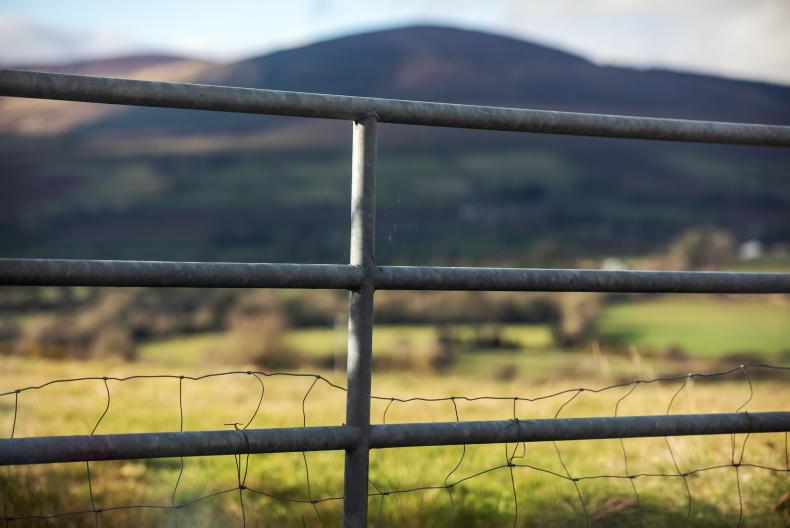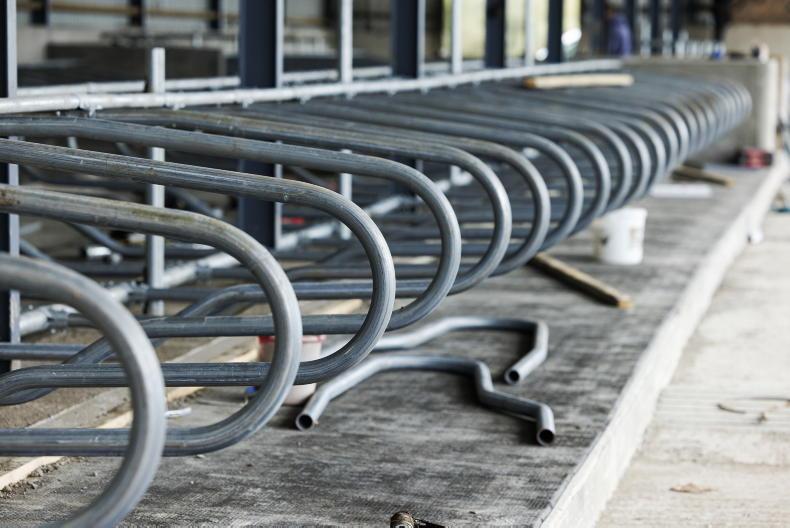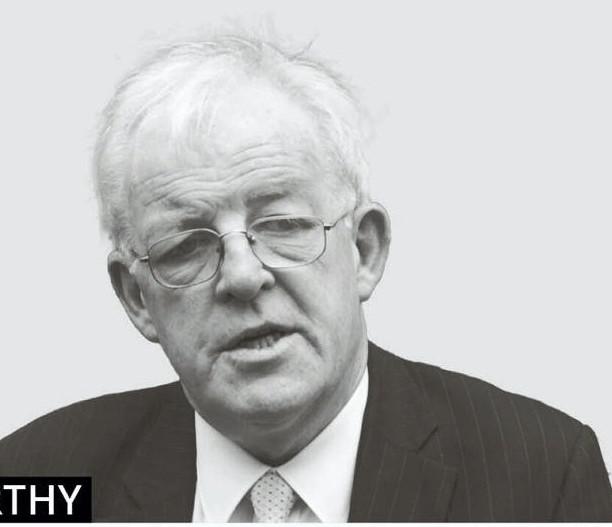When Budget 2017 was released last October, it came as a surprise to many – including the banks – when the Minister for Agriculture Michael Creed announced a loan fund of €150m in recognition of the cashflow and income challenges facing farmers.
The purpose was clear. It was in response to addressing the exceptional income situation facing many farmers after a very challenging 2016. The hope was that this money would be drawn down to inject cash into the farm business and also go towards paying off more expensive merchant credit and address hardcore merchant debt.
It definitely hit the right tones. For farmers, it was at a much more competitive lending rate than anything in the market, it was unsecured and it was available to all farm systems. For merchants and co-ops, it was a way of getting hardcore debt off their books. And for banks, it guaranteed margins with little risk.
This was possible because of its unique funding structure. In July, the European Commission announced a €350m aid package for European farmers, with €11m awarded to Ireland. The Government added €14m and used the combined €25m as leverage to draw down the €150m fund from the Strategic Banking Corporation of Ireland (SBCI).
This initial investment by the Government and use of farmer aid formed the foundation for the fund and guaranteed the banks against first losses (should they arise) as well as subsidising the interest rate, bringing it down to 2.95%.
Minister Creed urged farmers to consider the loan and promised the fund would be open in January 2017, on which he delivered.
As banks designed products to distribute the SBCI fund, farm organisations welcomed the introduction of the fund and the low cost of credit. Every producer was to welcome with open arms a direct boost to their cashflows, no matter how small the amount.
The hope was that the lower interest rate would help drag down the average lending rates of the commercial banks. At the time, the IFA said: “It will be a poor day for IFA if it’s not used and we can never go back talking about cheaper credit if not used.”
There was a huge hype in the buildup and it took on all the characteristics of a grant scheme. Many people seemed to view it as free money and manna from heaven. Banks did roadshows, and farmers believed that if you weren’t in, you couldn’t win. This created huge pent-up demand as farmers postponed decisions in the anticipation of what this loan could offer.
Twenty days of fun
On the first days in February the scheme opened and applications flooded in. Despite the scheme being designed to stay open until the end of September, it took only 20 working days for it to become oversubscribed, meaning applications for on average of €4.2m per day were received. So, does this deem the scheme a success?
According to the Central Bank, the average lending rate in Ireland is about 5.7%, so this was a very competitive rate. The scheme was complex. State aid rules didn’t help, but there was a large amount of confusion in the initial weeks as to what was allowed under the scheme.The lending partners naturally imposed their individual “normal lending terms and conditions”. Essentially this meant that farmers had to be able to show repayment capacity. And while they may have wanted to pay for fertiliser over six years, the banks were being responsible and didn’t allow this. So did this scheme help the farmers it was designed to help, the ones with hardcode merchant debt? If there was no underlying repayment capacity or there was debt on a farm that was not viable, it would suggest not. Many merchants believed this was going to solve their hardcore debt. For example, for a farmer with a merchant bill of €50,000 built up over five years, it was hoped he could get a six-year loan to clear this. The problem was that the merchant was not involved. So even if a farmer did succeed in getting approval, there was no compelling need for him to write a cheque to the merchant to clear the old balance. Like any time credit is extended into a sector, it distorts behaviour. This is the risk here. On average, around €650m is extended to farmers in new or restructured loans each year. This loan fund of €150m represents some 25% of this. What is surprising is this 25% was extended in just five weeks. Although the pace was unlikely to continue, at this rate of draw-down, in excess of €1bn of credit could have been extended to the sector for the full year, adding to the current outstanding farm debt of €3.3bn. If this money was being used to restructure existing credit, this is OK, but the fear is that this “free money” would be used at the extreme to buy shiny tractors and over-spec sheds.If the banks, upon seeing the huge demand, were innately clever and decided to serve their stronger farmers, then the scheme has failed in its purpose to assist farmers in difficulty. Given that not every farmer in Ireland would have wanted to (and now cannot) avail of the loan scheme, was it fair to direct the €11m exceptional aid money on offer from Brussels in the direction of the €150m loan fund?Irish farm borrowing levels
Along with our grass-based livestock system, Irish farmers’ competitive advantage is their low level of borrowings. According to the Teagasc National Farm Survey, average borrowings per farm in 2015 were €21,577 and were down 2% on 2014. Over the same period, gross new investment on farms totalled €785m in 2015, an increase of almost 9%. Therefore, many farms chose to fund new investment from working capital in 2015 rather than increase borrowings.
A large majority of farms have no farm debt. The average borrowings on dairy farms with debt was €100,058, compared to just €30,455 on cattle-rearing farms or €82,461 for tillage farms.
The latest Central Bank figures show that in the 12 months ending September 2016, farmers paid back more than €100m in farm debt. This brings the total debt paid down since 2008 to more than €2bn, meaning that debt on Irish farms is 37% less than at the peak in 2008. The figures to the end of September 2016 show that outstanding debt on Irish farms now stands at €3.3bn.
Read more
Farmers snap up €4.2m in low-cost loans per day
Full coverage: Agriculture Cashflow Support Loan Scheme
When Budget 2017 was released last October, it came as a surprise to many – including the banks – when the Minister for Agriculture Michael Creed announced a loan fund of €150m in recognition of the cashflow and income challenges facing farmers.
The purpose was clear. It was in response to addressing the exceptional income situation facing many farmers after a very challenging 2016. The hope was that this money would be drawn down to inject cash into the farm business and also go towards paying off more expensive merchant credit and address hardcore merchant debt.
It definitely hit the right tones. For farmers, it was at a much more competitive lending rate than anything in the market, it was unsecured and it was available to all farm systems. For merchants and co-ops, it was a way of getting hardcore debt off their books. And for banks, it guaranteed margins with little risk.
This was possible because of its unique funding structure. In July, the European Commission announced a €350m aid package for European farmers, with €11m awarded to Ireland. The Government added €14m and used the combined €25m as leverage to draw down the €150m fund from the Strategic Banking Corporation of Ireland (SBCI).
This initial investment by the Government and use of farmer aid formed the foundation for the fund and guaranteed the banks against first losses (should they arise) as well as subsidising the interest rate, bringing it down to 2.95%.
Minister Creed urged farmers to consider the loan and promised the fund would be open in January 2017, on which he delivered.
As banks designed products to distribute the SBCI fund, farm organisations welcomed the introduction of the fund and the low cost of credit. Every producer was to welcome with open arms a direct boost to their cashflows, no matter how small the amount.
The hope was that the lower interest rate would help drag down the average lending rates of the commercial banks. At the time, the IFA said: “It will be a poor day for IFA if it’s not used and we can never go back talking about cheaper credit if not used.”
There was a huge hype in the buildup and it took on all the characteristics of a grant scheme. Many people seemed to view it as free money and manna from heaven. Banks did roadshows, and farmers believed that if you weren’t in, you couldn’t win. This created huge pent-up demand as farmers postponed decisions in the anticipation of what this loan could offer.
Twenty days of fun
On the first days in February the scheme opened and applications flooded in. Despite the scheme being designed to stay open until the end of September, it took only 20 working days for it to become oversubscribed, meaning applications for on average of €4.2m per day were received. So, does this deem the scheme a success?
According to the Central Bank, the average lending rate in Ireland is about 5.7%, so this was a very competitive rate. The scheme was complex. State aid rules didn’t help, but there was a large amount of confusion in the initial weeks as to what was allowed under the scheme.The lending partners naturally imposed their individual “normal lending terms and conditions”. Essentially this meant that farmers had to be able to show repayment capacity. And while they may have wanted to pay for fertiliser over six years, the banks were being responsible and didn’t allow this. So did this scheme help the farmers it was designed to help, the ones with hardcode merchant debt? If there was no underlying repayment capacity or there was debt on a farm that was not viable, it would suggest not. Many merchants believed this was going to solve their hardcore debt. For example, for a farmer with a merchant bill of €50,000 built up over five years, it was hoped he could get a six-year loan to clear this. The problem was that the merchant was not involved. So even if a farmer did succeed in getting approval, there was no compelling need for him to write a cheque to the merchant to clear the old balance. Like any time credit is extended into a sector, it distorts behaviour. This is the risk here. On average, around €650m is extended to farmers in new or restructured loans each year. This loan fund of €150m represents some 25% of this. What is surprising is this 25% was extended in just five weeks. Although the pace was unlikely to continue, at this rate of draw-down, in excess of €1bn of credit could have been extended to the sector for the full year, adding to the current outstanding farm debt of €3.3bn. If this money was being used to restructure existing credit, this is OK, but the fear is that this “free money” would be used at the extreme to buy shiny tractors and over-spec sheds.If the banks, upon seeing the huge demand, were innately clever and decided to serve their stronger farmers, then the scheme has failed in its purpose to assist farmers in difficulty. Given that not every farmer in Ireland would have wanted to (and now cannot) avail of the loan scheme, was it fair to direct the €11m exceptional aid money on offer from Brussels in the direction of the €150m loan fund?Irish farm borrowing levels
Along with our grass-based livestock system, Irish farmers’ competitive advantage is their low level of borrowings. According to the Teagasc National Farm Survey, average borrowings per farm in 2015 were €21,577 and were down 2% on 2014. Over the same period, gross new investment on farms totalled €785m in 2015, an increase of almost 9%. Therefore, many farms chose to fund new investment from working capital in 2015 rather than increase borrowings.
A large majority of farms have no farm debt. The average borrowings on dairy farms with debt was €100,058, compared to just €30,455 on cattle-rearing farms or €82,461 for tillage farms.
The latest Central Bank figures show that in the 12 months ending September 2016, farmers paid back more than €100m in farm debt. This brings the total debt paid down since 2008 to more than €2bn, meaning that debt on Irish farms is 37% less than at the peak in 2008. The figures to the end of September 2016 show that outstanding debt on Irish farms now stands at €3.3bn.
Read more
Farmers snap up €4.2m in low-cost loans per day
Full coverage: Agriculture Cashflow Support Loan Scheme










SHARING OPTIONS